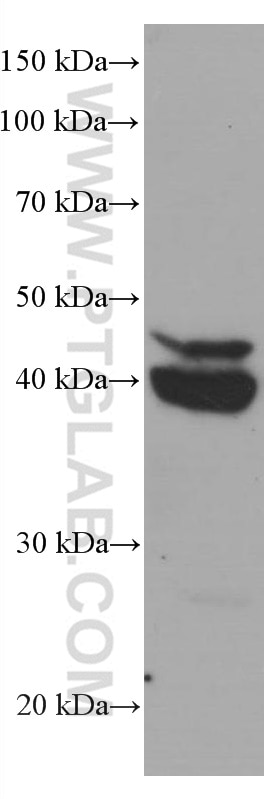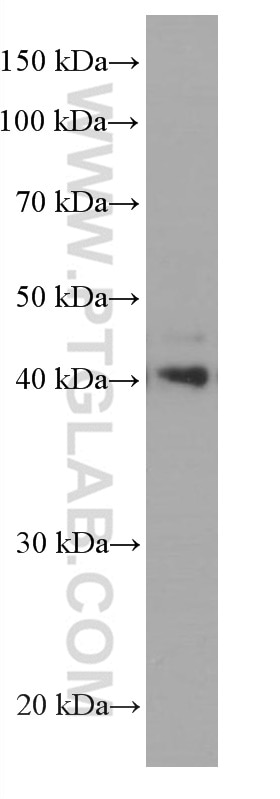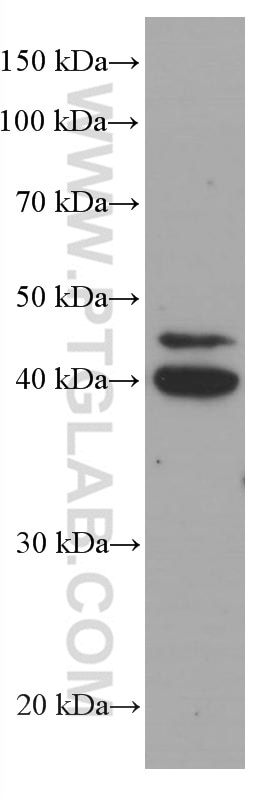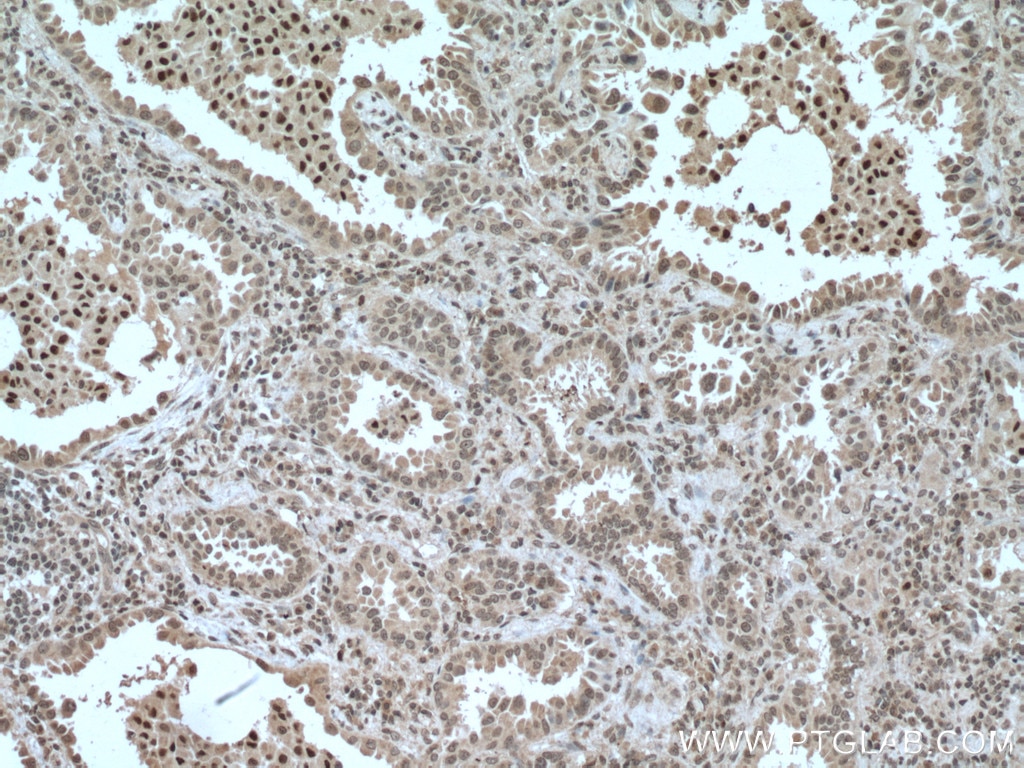Anticorps Monoclonal anti-CEBPB
CEBPB Monoclonal Antibody for WB, IHC, Indirect ELISA
Hôte / Isotype
Mouse / IgG1
Réactivité testée
Humain, rat, souris
Applications
WB, IHC, Indirect ELISA
Conjugaison
Non conjugué
CloneNo.
2B6E10
N° de cat : 66649-1-PBS
Synonymes
Galerie de données de validation
Informations sur le produit
66649-1-PBS cible CEBPB dans les applications de WB, IHC, Indirect ELISA et montre une réactivité avec des échantillons Humain, rat, souris
| Réactivité | Humain, rat, souris |
| Hôte / Isotype | Mouse / IgG1 |
| Clonalité | Monoclonal |
| Type | Anticorps |
| Immunogène | CEBPB Protéine recombinante Ag20073 |
| Nom complet | CCAAT/enhancer binding protein (C/EBP), beta |
| Masse moléculaire calculée | 345 aa, 36 kDa |
| Poids moléculaire observé | 40-45 kDa |
| Numéro d’acquisition GenBank | BC007538 |
| Symbole du gène | CEBPB |
| Identification du gène (NCBI) | 1051 |
| Conjugaison | Non conjugué |
| Forme | Liquide |
| Méthode de purification | Purification par protéine G |
| Tampon de stockage | PBS only |
| Conditions de stockage | Store at -80°C. 20ul contiennent 0,1% de BSA. |
Informations générales
CCAAT/enhancer-binding protein beta (CEBPB), also known as LAP, is a important transcriptional activator in the regulation of genes involved in immune and inflammatory responses. It specifically binds to an IL-1 response element in the IL-6 gene. NF-IL6 also binds to regulatory regions of several acute-phase and cytokines genes. It probably plays a role in the regulation of acute-phase reaction, inflammation and hemopoiesis. The consensus recognition site is 5'-T[TG]NNGNAA[TG]-3'. Functions in brown adipose tissue (BAT) differentiation By similarity. Regulates the transcriptional induction of peroxisome proliferator-activated receptor gamma (PPARG). CEBPb mRNAs possess alternative translation-initiation codons, which result in the formation of truncated forms of the protein. All major isoforms of CEBPB (38, 34, and 20 kDa) are expressed, with the 34 and 20kDa isoforms being more abundant in preovulatory follicles and further increased in corpora lutea (CL)(PMID:15647458).The truncated protein of 18 kDa (relative to the 30 kDa full-length protein that is known as LAP, or p30 CEBPb or liver-activating protein) lacks a transactivation domain,also known as LIP (p19 CEBPb or liver-inhibitory protein), can form homodimers or heterodimerize with other family members and, as it lacks the transactivation domain, can attenuate the transcriptional activation properties of the other isoforms.(10051447). Three variants of CEBPBs have been detected in many cell types: a 46 kDa full-length liver-enriched transcription-activating protein (LAP1), a 42 kDa LAP2 and a 20-kDa liver-enriched transcription-inhibitory protein (LIP). These variants are the result of an alternative translation initiation due to a leaky ribosomal scanning mechanism.(PMID:18820298).









